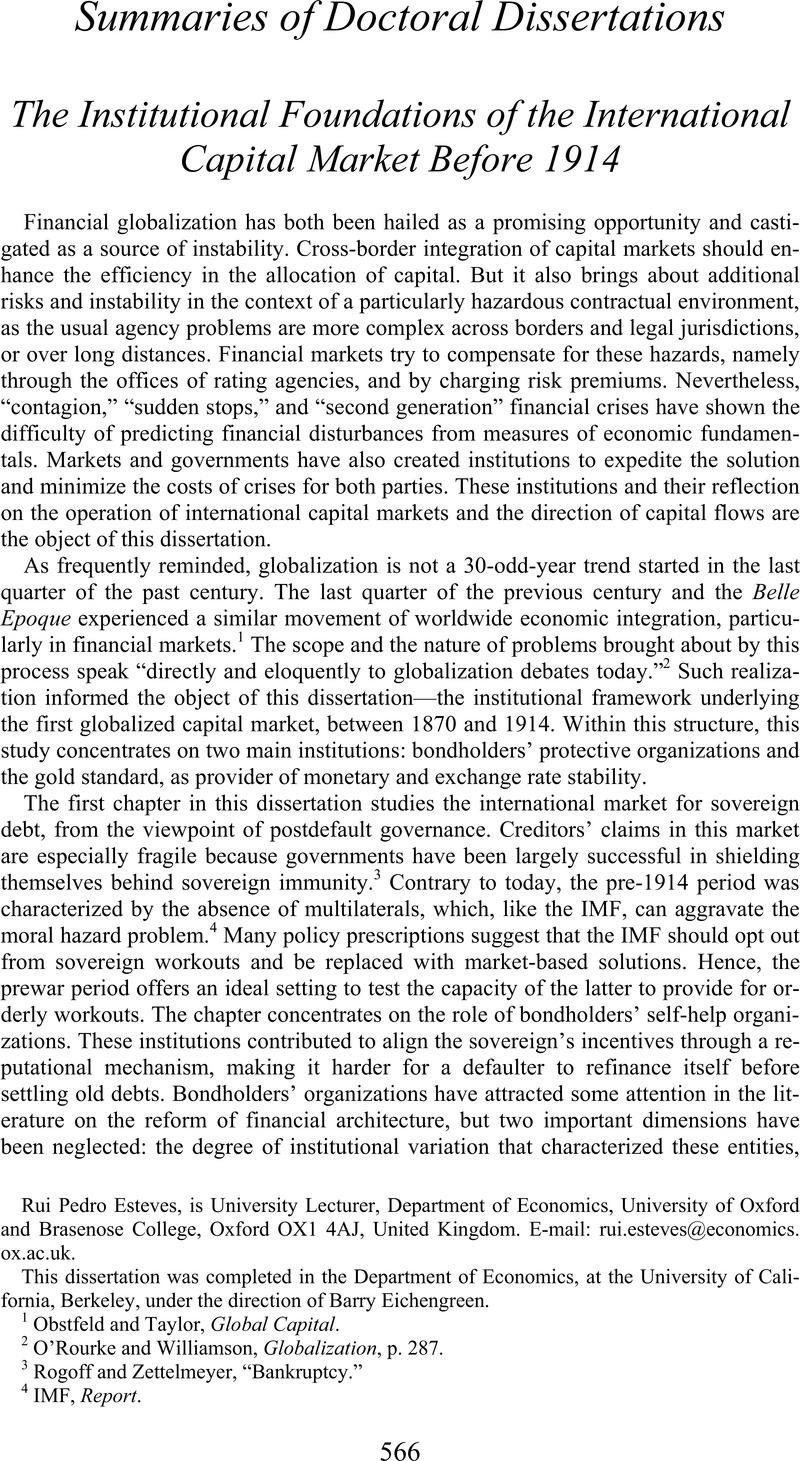Bordo, Michael, and
Flandreau, Marc. “Core, Periphery, Exchange Rate Regimes, and Globalization.” In
Globalization in Historical Perspective, edited by
Bordo, Michael,
Taylor, Alan, and
Williamson, Jeffrey,
417–72.
Chicago:
University of Chicago Press,
2003.
CrossRefGoogle Scholar 